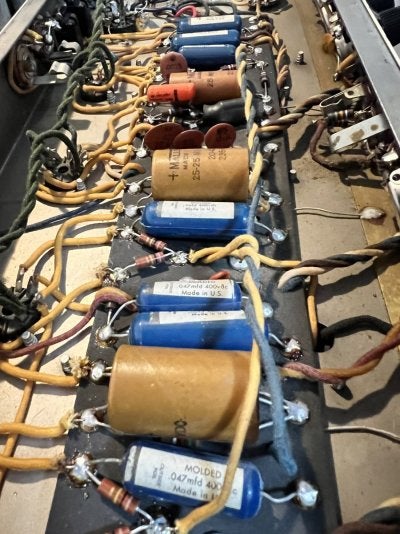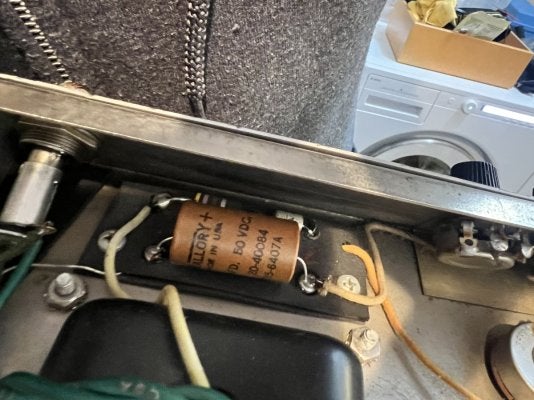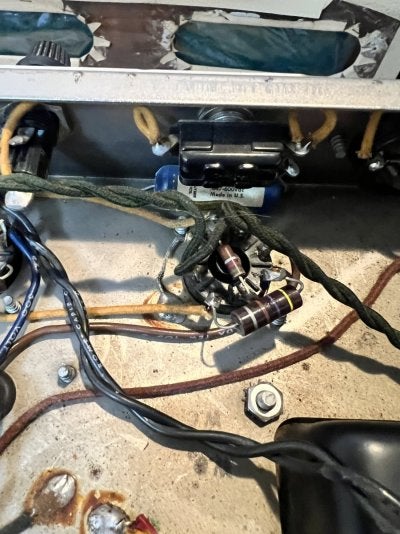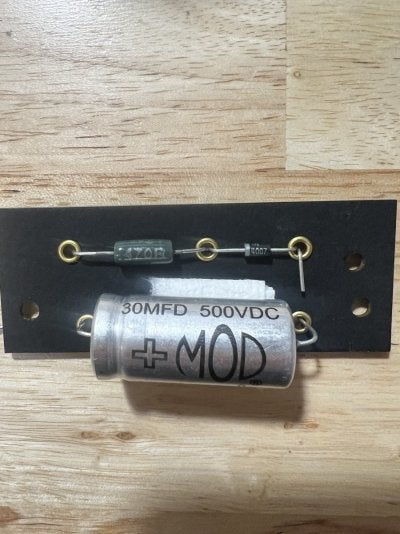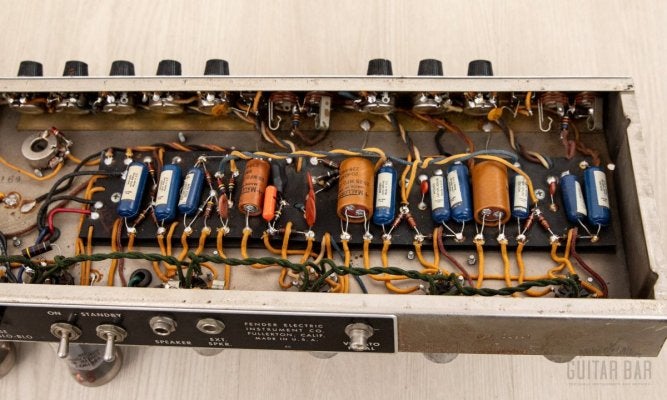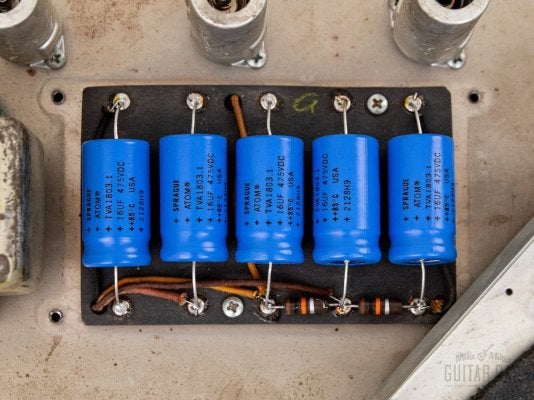Hello Friends.
For my first post at this forum I present a 1964 Fender Tremolux amp. I recently acquired this amp. It sounds great, fully functional and appears to be mostly original.

My goals with the amp are (in order of importance) 1. Maintain amp's character sound and playability. 2. Eliminate items dangerous to me. 3. Mitigate items that may damage vintage, difficult to replace amp components. 4.While I don't want a museum piece, avoid significantly devaluing amp.
So I fell like I am starting at a good place with this amp, but there is some work that needs to be done. I would like to do some of this work myself but also feel like some work is better done by an amp tech with all the right tools.
I am looking for folk's advice on if this list looks good or if I am missing something. So here goes:
1. Three prong cord was installed with a tight ground wire to the transformer lug (see photo IMG_2203). I believe a longer ground wire to a chassis solder is considered a a better installation. Cord is too short at about five feet. - Amp Tech would need to do this.
2. Death cap, ground lift switch and convenance outlet are all still in place and wired (see photo IMG_2202). I would like these components lifted from the circuit but left in place. I may in the future use the switch and the outlet hole for future mods. - Amp Tech should do this.
3. Bias Board - The original cap is still intact (IMG_2200). I am assuming the resister and diode are original too. I have built a brand new bias board (IMG_2247) from all new parts and plan to swap out the new board for the old one. - As long as I can reuse the ground wire coming from the chassis I would do the change myself.
4. I see several folks lift the the center tap for the power trans. secondary heater wires and install a pair of 100ohm resistors. I would do this when I replace the bias board.
5. Electrolytic Caps - The filter caps have all been replaced but the remaining electrolytic caps (Mallory) are all in place. If necessary, I would do this work.
I am attaching photos below in case anyone would be so kind to look and see if they notice any other items that should be added to the list. I will likely finish building a Mojotone Tweed Princeton before taking the T-lux to the tech for items 1 and 2. That way I still have an amp to play with and I gain experience building the new amp. Then I would tackle the rest of the list.
Thank you in advance for your help and insights.
For my first post at this forum I present a 1964 Fender Tremolux amp. I recently acquired this amp. It sounds great, fully functional and appears to be mostly original.
My goals with the amp are (in order of importance) 1. Maintain amp's character sound and playability. 2. Eliminate items dangerous to me. 3. Mitigate items that may damage vintage, difficult to replace amp components. 4.While I don't want a museum piece, avoid significantly devaluing amp.
So I fell like I am starting at a good place with this amp, but there is some work that needs to be done. I would like to do some of this work myself but also feel like some work is better done by an amp tech with all the right tools.
I am looking for folk's advice on if this list looks good or if I am missing something. So here goes:
1. Three prong cord was installed with a tight ground wire to the transformer lug (see photo IMG_2203). I believe a longer ground wire to a chassis solder is considered a a better installation. Cord is too short at about five feet. - Amp Tech would need to do this.
2. Death cap, ground lift switch and convenance outlet are all still in place and wired (see photo IMG_2202). I would like these components lifted from the circuit but left in place. I may in the future use the switch and the outlet hole for future mods. - Amp Tech should do this.
3. Bias Board - The original cap is still intact (IMG_2200). I am assuming the resister and diode are original too. I have built a brand new bias board (IMG_2247) from all new parts and plan to swap out the new board for the old one. - As long as I can reuse the ground wire coming from the chassis I would do the change myself.
4. I see several folks lift the the center tap for the power trans. secondary heater wires and install a pair of 100ohm resistors. I would do this when I replace the bias board.
5. Electrolytic Caps - The filter caps have all been replaced but the remaining electrolytic caps (Mallory) are all in place. If necessary, I would do this work.
I am attaching photos below in case anyone would be so kind to look and see if they notice any other items that should be added to the list. I will likely finish building a Mojotone Tweed Princeton before taking the T-lux to the tech for items 1 and 2. That way I still have an amp to play with and I gain experience building the new amp. Then I would tackle the rest of the list.
Thank you in advance for your help and insights.

